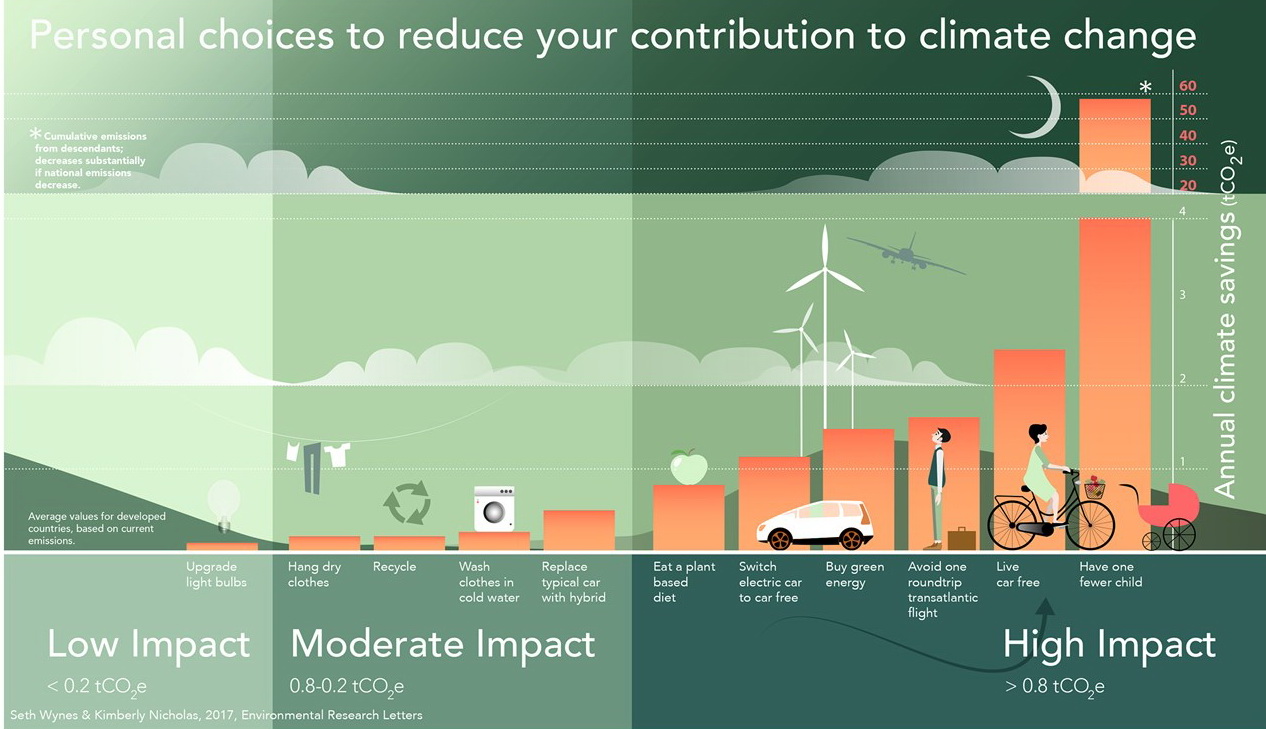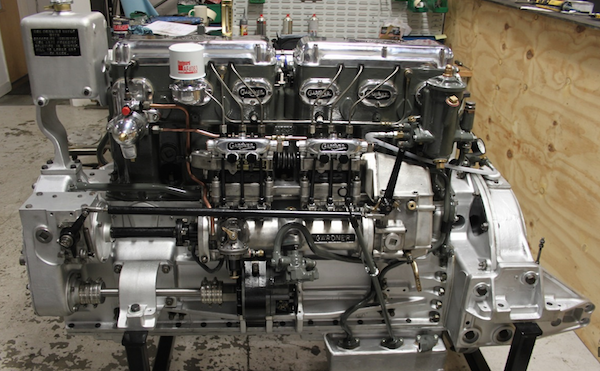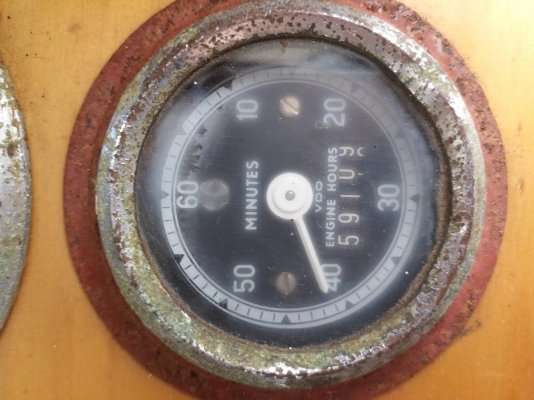This has been an entertaining and educational read. We’re in the process of hunting for a trawler and as difficult as it is to find one that fits the bill, I suspect we'll take whatever engine we end up with. (Although we did turn down a boat we liked just because it had twin Volvos in it.) The only thing we know for sure is that we don't want a Westerbeast. We fought with the one in our sailboat for ten years and that was enough.Thanks for all the input. Keep the conventional wisdom coming.
You are using an out of date browser. It may not display this or other websites correctly.
You should upgrade or use an alternative browser.
You should upgrade or use an alternative browser.
Just curious how folks here would rank Diesel Engine Manufacturers
- Thread starter Moby Nick
- Start date
The friendliest place on the web for anyone who enjoys boating.
If you have answers, please help by responding to the unanswered posts.
If you have answers, please help by responding to the unanswered posts.
OldDan1943
Guru
- Joined
- Oct 2, 2017
- Messages
- 10,595
- Location
- USA
- Vessel Name
- Kinja
- Vessel Make
- American Tug 34 #116 2008
My 1989 N46 had a John Deere/Lugger and a keel cooler. Naturally aspirated, 120hp. It was so far from today's engines but, never had a lick of problem with it.
Now I have a fancy Cummins 380, with electronic engine controls. It too is supposed to be very reliable.....
Now I have a fancy Cummins 380, with electronic engine controls. It too is supposed to be very reliable.....
Actually not really far fetched
A pebble reactor which would be about the size of a Genset would last 100 years or more and produce enough heat and power to run pretty much anything.
they are simple and pretty much fool proof.
Not sure that would be such a good idea. At work we process radioisotope thermal generators and load them into space craft. Our last package will be landing on Mars on 18 Feb.
Screwing around with a plutonium package is no fun. Your skin would fry at 350 degrees standing within 10 fr of the thing. Plus they generate about the power of a lightbulb. Plus you would need two full time armed guards, 24-7.
Of course this is all in fun, Mr. Wave [emoji846]
Its a lot small than a Gardner
6.8 litre vs 10.45 litre
Nahhh. Nothing beats big-iron in a trawler.
Take that huge 855 of yours, detune it to 200hp, and your grandkids will still be sailing your boat around the Pacific 50 years from now.
FF
Guru
- Joined
- Oct 12, 2007
- Messages
- 22,552
"Big slow moving boats like big slow turning engines...."
True Dat!
Todays modern engines seem to be built to get the most HP in a small light package.
Great for sport fish ,or ski boats a horror for cruisers.
1 hp per cubic inch displacement seems the goal, so we have to put up with electronic injection, turbos, inter coolers and a pile of parts that need frequent maint .
The older engines may not be loved by the Air Police , but at 1 hp per 3 cubic inches their service life may be 5 or 10 times longer than the "modern" engines.
The older large engines are indeed heavier but an extra 1000 lbs of engine weight only costs an extra 3 hp per hour at cruise .
Lots easier to carry an extra 20 gallons of diesel than a $10,000 computer and a dozen $1,000 injectors and the tools and skill to change them underway.
True Dat!
Todays modern engines seem to be built to get the most HP in a small light package.
Great for sport fish ,or ski boats a horror for cruisers.
1 hp per cubic inch displacement seems the goal, so we have to put up with electronic injection, turbos, inter coolers and a pile of parts that need frequent maint .
The older engines may not be loved by the Air Police , but at 1 hp per 3 cubic inches their service life may be 5 or 10 times longer than the "modern" engines.
The older large engines are indeed heavier but an extra 1000 lbs of engine weight only costs an extra 3 hp per hour at cruise .
Lots easier to carry an extra 20 gallons of diesel than a $10,000 computer and a dozen $1,000 injectors and the tools and skill to change them underway.
Last edited:
twistedtree
Guru
Disappointing to hear a Cat is painting other maker engines. Their reputation is at stake.
I had a Cat D5 dozer for a while and it's yellow Cat engine was a Misubishi.
Do you change the oil in the injector pump "regularly"?256 gph?!? Man... good argument for a carbon tax.
What about my FL120s? Parts are cheap, no electronics, good efficiency, no Ph.D required for repair.
Bilgewater
Senior Member
- Joined
- Jun 20, 2011
- Messages
- 276
- Location
- USA
- Vessel Name
- Sunset Lady
- Vessel Make
- 1975 Chris Craft 35 Aft Cabin
I'm surprised that nobody mentioned Perkins. I had a Gulfstar with 2 4-235 80 hp four bangers that I loved. They ran great, easy to work on, easy to get parts. I could cruise all day at 7 kts and burn 3 gph total. Not a go fast boat, but reliable.
Bill & Stella
Veteran Member
And, per my understanding, there are still a few who buy and marinize from them as opposed to directly from Deere. I don't know why. Apparently there's an entire cottage industry on marinizing Deere and a good bit for Kubota.
Current emissions standards are scrambling a lot right now, even more at the high hp end of the market.
JD marine engines have the turbo at the back of the block to provide a low profile for sedan type vessels with engines under the salon sole. Bad design for standup engine rooms as the exhaust path is complicated. When I tried to purchase top mounted turbo 4045's to be marinized by MER in Seattle JD refused to sell them to me.
NOTE: IVECO NEF100's (4 cylinder) and NEF 150's (6 cylinder) were the most trouble free engines I have ever installed. Still marinized for Tier II approved vessels as the BETA 150.
GoneDiving
Senior Member
Had my 1987 32 Bayliner with (2)135 Hino diesels in it. Not 1 problem with it. When I sold it last year it had 3100 hours on the engines. I never heard of a problem with them. Somewhat familier with the 175 hinos. Only problem I herd about on the 175"s was the manicoller. Easy to fix
I wasn't aware if them being used in developed countries' markets (see my earlier post about Japanese truck engines being used throughout Asia). What level of marinisation did yours have: wet exhaust; derated; turbo removed? Do you know what truck/industrial engines they were based upon?
I'm not surprised yours worked well. In a medium truck configuration they are bullet proof
Thanks
GoneDiving
Senior Member
Big slow moving boats like big slow turning engines....
You mean like 50ft, 50t, 11.5litres (700cu in), 180hp @ 1800 rpm. ?
Attachments
johnrupp
Senior Member
I wasn't aware if them being used in developed countries' markets (see my earlier post about Japanese truck engines being used throughout Asia). What level of marinisation did yours have: wet exhaust; derated; turbo removed? Do you know what truck/industrial engines they were based upon?
I'm not surprised yours worked well. In a medium truck configuration they are bullet proof
Thanks
The early years used the W04D which was NA and rated at 110 HP. They then went with the W04C-T which has a turbo. They derated engine from 150 to 135 HP for the first two years or so do to limitations of the Hurth 360 gear. In mid 1989 they went with the Hurth 630 gear and upped the HP to the full 150. Engine are fully marinized with wet exhaust etc.
The later models years of the 3888 also used this engine. They used the W04C-TI which has both turbo and intercooler. It is rated at 210 HP.
The W04 is still in production and used on Hino’s medium duty trucks.
Interesting engine data available on this site. www.bayliner32xx.com
I will also attest the engines are as bulletproof as the come.
John
Bill & Stella
Veteran Member
Its a big scam!
The greatest cause of Co2 pollution is overpopulation.
 Each child born generates 58,000,000 tons of Co2 over four generations.
Each child born generates 58,000,000 tons of Co2 over four generations.

I read somewhere that all the Co2 reduction generated by all the yachts operating in the world was exceeded each day by 0130 by the babies born that morning.
I'm now installing two "new" Gardeners (seasoned blocks) which will be registered in the Cook Islands by their owners.

The greatest cause of Co2 pollution is overpopulation.


I read somewhere that all the Co2 reduction generated by all the yachts operating in the world was exceeded each day by 0130 by the babies born that morning.
I'm now installing two "new" Gardeners (seasoned blocks) which will be registered in the Cook Islands by their owners.

clyde
Senior Member
when i was comercial fishing in alaska, on trollers/purse seiners, 90% used CAT engines, even the seine skiffs had 4 cyl cats, and when towing one end of the net, we ran them hard! they lasted for many years!...clyde (again)
Between longtime employments I once worked briefly at a service engineering company where my Supervisor possessed considerable engine development experience. When I knew him one of his projects involved testing a small Mitsubishi engine for Onan. He was no "lightweight"; his resume included Mechanical Engineering in the same building as Dr Fermi at Alamogordo as well as for Caterpillar. He once told me "Nobody builds engines like Caterpillar". I've never read that sort of evaluation here in regard to boats.
Gardner is among the best ever built. Slow turning and will go 30-50K hours if maintained.
Detroit two strokes are outstanding. No computers, can get maintenance anywhere in the world. Parts easily sourced.
MAN, MTU, And new Cats are wonderful engines. However, VERY expensive to maintain.
Nomad Willy
Guru
Why did Gardners use so much aluminum?
Excluding the obvious.
Excluding the obvious.
Island Cessna
Senior Member
- Joined
- Feb 19, 2011
- Messages
- 307
Why did Gardners use so much aluminum?
Excluding the obvious.
My wild guess is that due to low volume non-structural castings were cheaper to make and machine in aluminum than to make dies and press steel. Bill
Nomad Willy
Guru
Island Cessna,
I thought there could be an interesting answer but I didn’t really expect to get one.
It IS interesting. Would all the aluminum cause the engine to be on the noisy side? I had an Hitatsu gear on my Albin and it was aluminum ... very noisy. When I repowered my Willard I choose an engine w no aluminum. That was mostly for anti-corrosion.
I thought there could be an interesting answer but I didn’t really expect to get one.
It IS interesting. Would all the aluminum cause the engine to be on the noisy side? I had an Hitatsu gear on my Albin and it was aluminum ... very noisy. When I repowered my Willard I choose an engine w no aluminum. That was mostly for anti-corrosion.
Similar threads
- Replies
- 40
- Views
- 3K

